The integration of Artificial Intelligence (AI) into the educational sector marks a pivotal shift in how knowledge is delivered and consumed, aligning with the eLearning trends of 2024. With the advent of AI in eLearning, educators and learners are experiencing unprecedented changes, making education more personalized, accessible, and efficient. This blog explores the transformative power of AI in eLearning, highlighting ten significant ways it’s reshaping the education industry, its benefits, challenges, and what the future holds. As we delve into the eLearning trends of 2024, we uncover how AI-driven analytics, adaptive learning technologies, and AI-powered virtual assistants are at the forefront, offering a glimpse into a future where learning is more tailored to individual needs, preferences, and learning paces.
Power of AI in eLearning
AI’s role in eLearning, particularly within microlearning platforms, is multifaceted, offering solutions that range from personalized learning paths to automated administrative tasks. By harnessing the capabilities of AI, these microlearning platforms can adapt to the needs of individual learners, providing a tailored learning experience that was once thought impossible. This approach not only enhances engagement by delivering bite-sized, relevant content but also optimizes the learning process through intelligent recommendations and feedback mechanisms.
1. Personalized learning experiences
AI in eLearning leverages machine learning algorithms and data analytics to create a customized learning path for each student. By collecting and analyzing data on students’ learning habits, performance, preferences, and even emotional states, AI systems can identify the most effective teaching methods and materials for each learner. This could mean adjusting the difficulty level of tasks, suggesting resources that match the learner’s interests, or providing additional support in areas where the learner struggles.
2. Intelligent tutoring systems
AI-powered tutoring systems provide students with one-on-one support, offering explanations, feedback, and assistance just like a human tutor but available 24/7. By incorporating techniques from machine learning, natural language processing, and cognitive psychology, ITS can adapt to the learning profiles of individual students, offering guidance, resources, and challenges that are most suitable for their level of understanding and progress.

3. Automated grading
Automated grading systems powered by AI utilize complex algorithms and natural language processing (NLP) technologies to evaluate and score student assignments, ranging from multiple-choice tests to detailed essays. These systems are trained on vast datasets of previously graded work, allowing them to learn and apply grading criteria consistently and accurately. As AI technologies evolve, these systems become increasingly sophisticated, capable of understanding nuances in language, argumentation, and even creativity in student responses.
4. Predictive analytics
Predictive analytics with AI involves several key steps: data collection, data analysis, model building, and deployment. Initially, it requires a comprehensive dataset as a foundation. AI algorithms then sift through this data, learning from patterns and anomalies. Over time, these algorithms adjust and refine their predictions based on new data, continually improving in accuracy and reliability.
Machine learning models, a subset of AI, are particularly adept at handling vast and varied datasets, making them ideal for predictive analytics. These models can be trained to recognize complex patterns and relationships that would be impossible for humans to discern, enabling predictions about future events or behaviors.
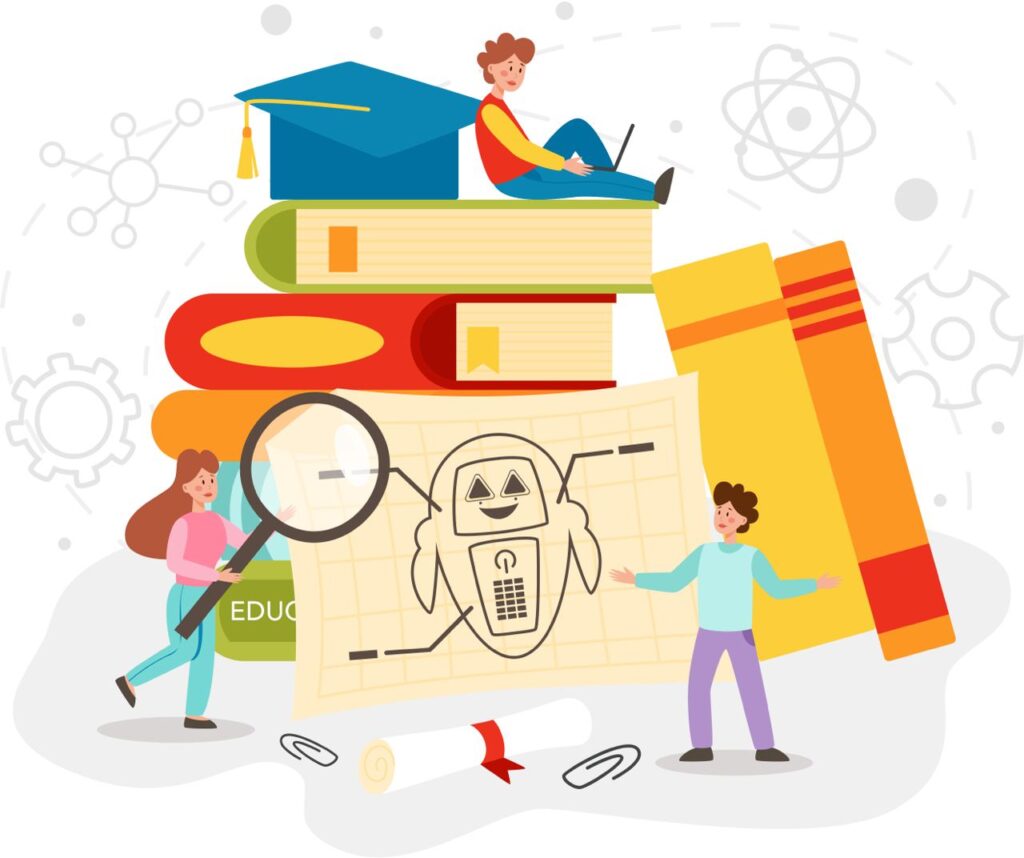
5. Enhanced engagement with chatbots
Chatbots, powered by artificial intelligence and natural language processing technologies, simulate conversations with users, offering a range of functionalities from answering queries to providing explanations and facilitating learning activities. In the context of eLearning, chatbots serve as virtual tutors, guiding learners through course materials, answering their questions, and providing personalized feedback.
One of the key advantages of chatbots in eLearning is their ability to deliver personalized learning experiences. By analyzing a learner’s responses and behavior, chatbots can adapt the content to fit the learner’s knowledge level, learning pace, and preferences. This tailored approach helps in maintaining learners’ interest and motivation, as the content feels more relevant and engaging to them.
6. Content generation and curation
AI-driven content generation involves the use of sophisticated algorithms and natural language processing (NLP) technologies to produce educational materials. Here’s how AI contributes to content generation in eLearning:
- Automated Content Creation: AI can automatically generate textual content, quizzes, and summaries from a large dataset, significantly reducing the time and effort required by educators to create course materials.
- Adaptive Content: AI algorithms analyze learner data to understand individual learning paths and preferences. Based on this analysis, AI can generate customized content that addresses the specific needs, weaknesses, and strengths of each learner.
- Language and Grammar Enhancement: Tools powered by AI, such as Grammarly, assist in improving the quality of written content by checking for grammar, punctuation, and style, ensuring that the educational material is clear, concise, and comprehensible.
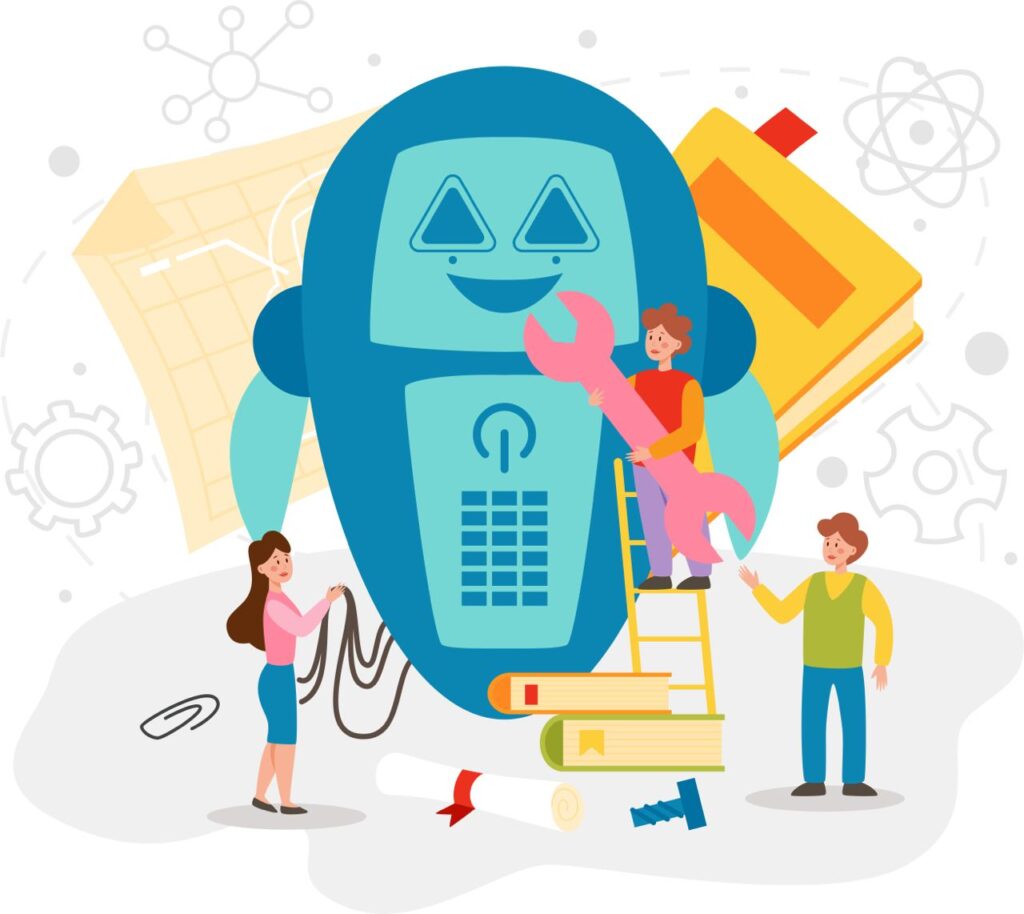
7. Language learning
One of the most significant advantages of AI in language learning is its ability to create personalized learning experiences. AI algorithms analyze a learner’s performance, strengths, weaknesses, and preferences to tailor the curriculum accordingly. This means that if a learner struggles with verb conjugations but excels in vocabulary, the AI system can adjust the content to provide extra practice where it’s needed, ensuring a more balanced and effective learning experience.
8. Gamification of learning
The fusion of gamification and Artificial Intelligence (AI) in learning environments is revolutionizing the educational landscape, creating more engaging, personalized, and effective learning experiences. This innovative approach leverages the motivational elements of game design and the adaptive capabilities of AI to meet the diverse needs of learners. Here, we explore how the gamification of learning with AI is transforming education and what it means for the future of learning.
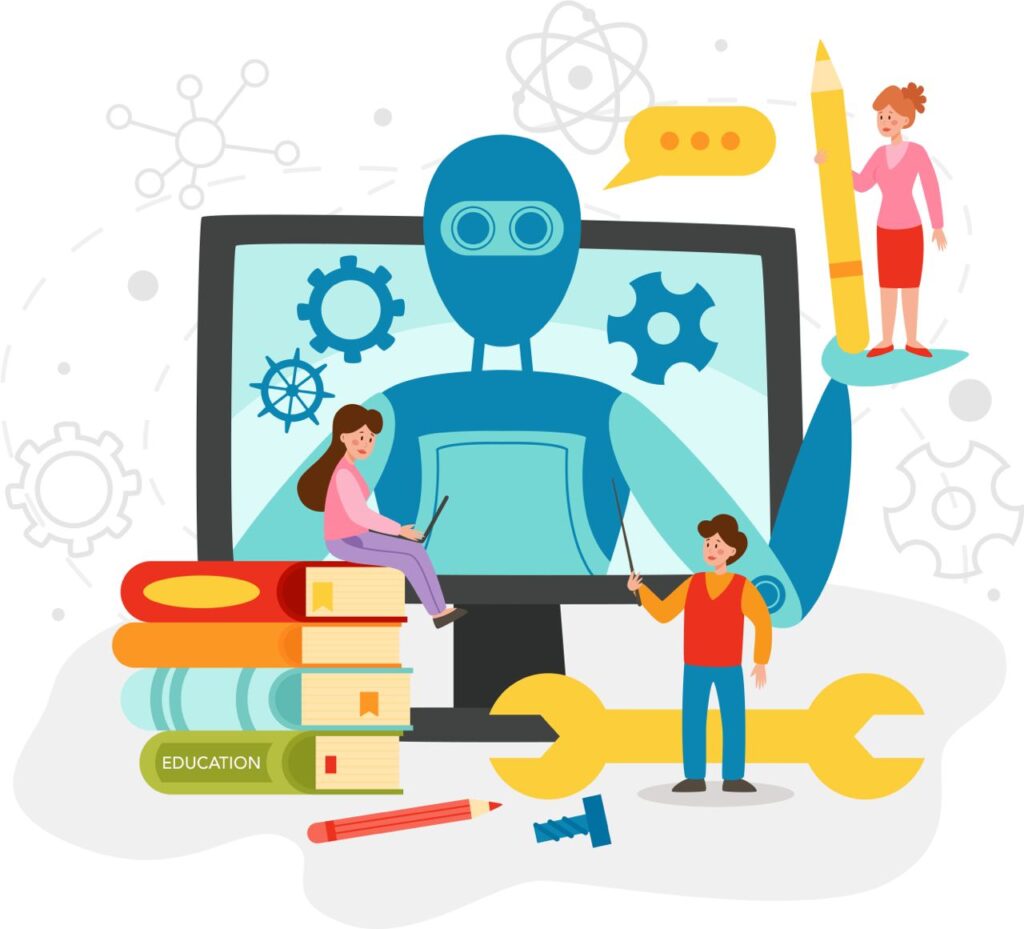
9. Accessibility improvements
AI in eLearning is paving the way for a more inclusive and accessible educational landscape. By leveraging AI technologies, eLearning platforms can provide personalized, adaptable, and supportive learning experiences for learners with disabilities. As AI continues to evolve, its role in enhancing accessibility will undoubtedly expand, offering promising solutions to overcome traditional barriers to education and ensuring that learning is truly for everyone.
10. Data-driven insights for educators
The integration of Artificial Intelligence (AI) into eLearning platforms is revolutionizing the educational landscape, offering unprecedented opportunities for educators to enhance their teaching methods and improve student outcomes. One of the most significant advantages of AI in eLearning is its ability to provide data-driven insights. These insights enable educators to make informed decisions, tailor their instruction to meet individual student needs, and ultimately, foster a more effective learning environment.
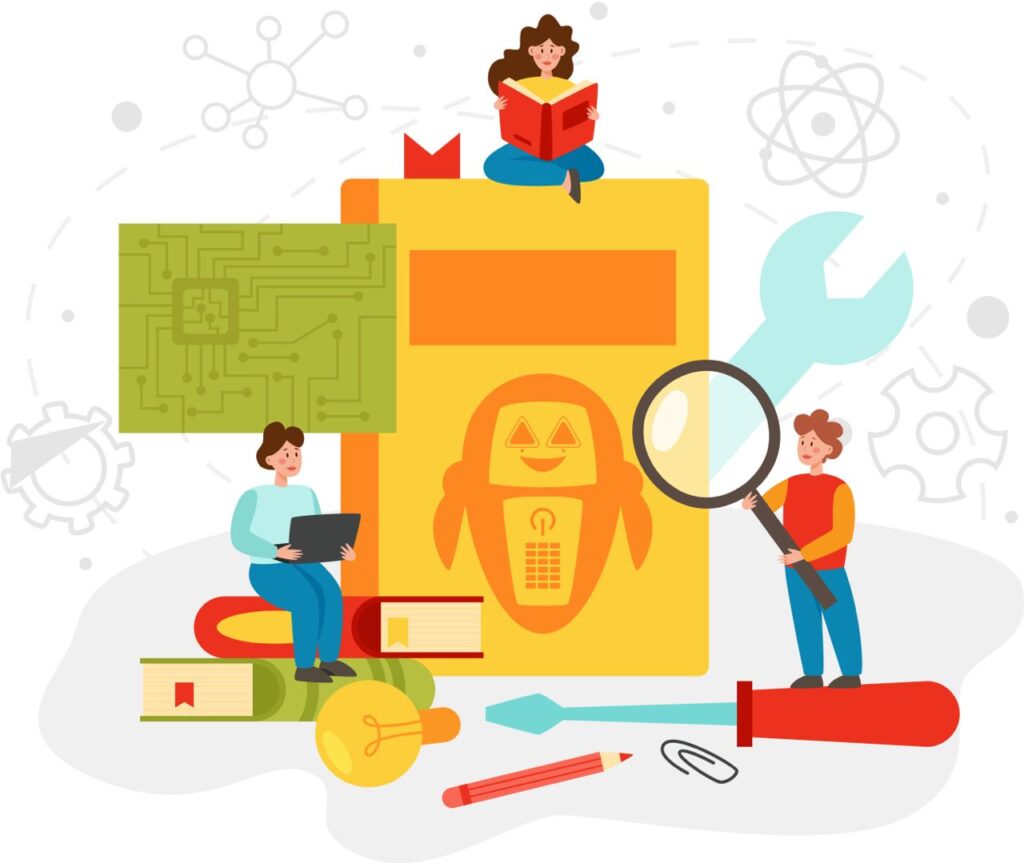
The future of eLearning
The integration of these trends is set to create a more personalized, engaging, and efficient learning environment. As we move forward, the future of eLearning looks promising, with technologies like AI, VR, and blockchain paving the way for innovative educational practices. These trends are not only enhancing the learning experience but are also making education more accessible to people around the world.
Benefits of AI in eLearning
The benefits of integrating AI into eLearning are vast, including increased personalization, accessibility, and efficiency in education. AI facilitates a learning environment that caters to individual needs, preferences, and learning speeds, making education more effective and engaging.
Challenges of adopting AI in eLearning
Despite its advantages, the adoption of AI in eLearning faces challenges such as high implementation costs, data privacy concerns, and the need for significant infrastructure and training for educators and administrators.
Real-world AI in eLearning Examples
Platforms like Coursera and Duolingo use AI to offer personalized learning experiences and feedback. Similarly, AI-powered tools like Grammarly assist in improving writing skills, showcasing the practical applications of AI in enhancing learning.
Future of AI in eLearning
The future of AI in eLearning looks promising, with ongoing advancements expected to further personalize learning, make education more accessible, and transform the role of educators. As AI technologies evolve, their integration into eLearning will continue to offer innovative solutions to longstanding educational challenges.
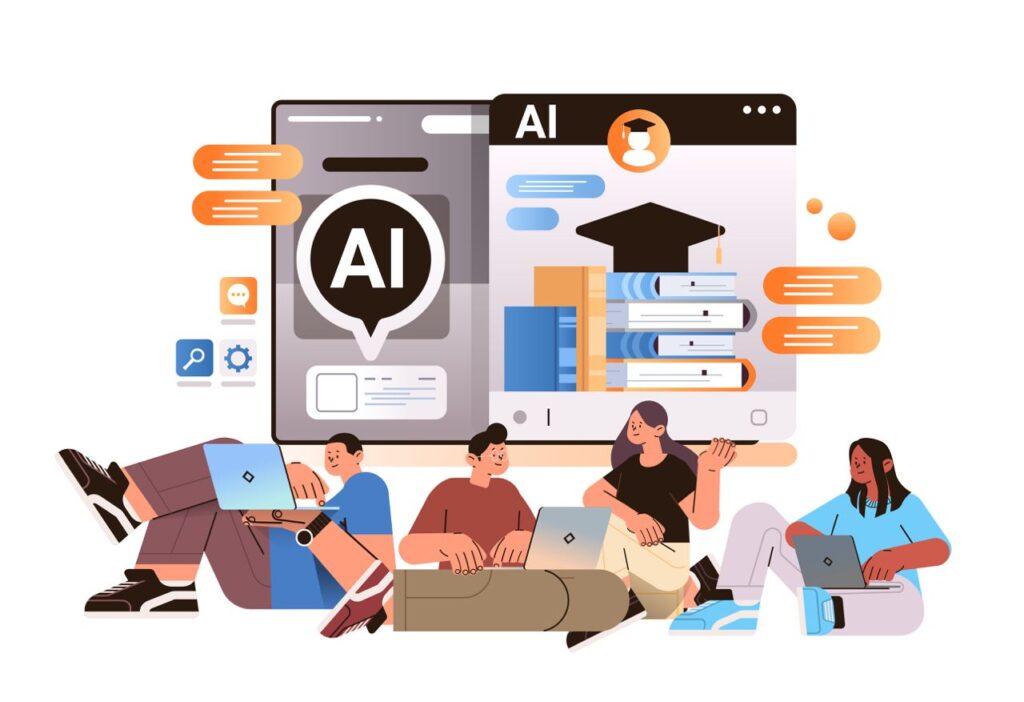
Wrapping Up
AI in eLearning is not just a trend; it’s a revolution that’s reshaping the education industry. By offering personalized, accessible, and efficient learning experiences, AI is transforming how we teach and learn. Despite the challenges, the potential benefits of AI for eLearning are immense, promising a future where education is more inclusive, engaging, and tailored to individual needs. As we move forward, the continued integration of AI into eLearning will undoubtedly unlock new possibilities for educators and learners alike.
